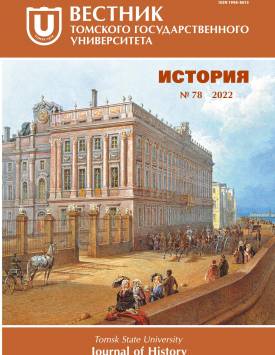Outposts of socialism: the cultural landscape of Ural towns
In the 1930s the towns of the Urals change dramatically. They were transformed from examples of provincial backwardness into outposts of socialism, which were to become a model for the rest of the country. The construction of such giant enterprises as the Chelyabinsk Tractor Plant, the Magnitogorsk Metallurgical Combine, the Ural MachineBuilding Plant, the Berezniki Chemical Combine, etc., was not only supposed to bring the Soviet economy to a new level, but also to form a new Soviet man. While the political and economic aspects of Soviet industrialization have been well studied, there are very few works that analyze the cultural landscape of the socialist cities. The comprehension of the symbolic transformation of the lansdaft of the Ural cities stems from an analysis of Konstantin Bugrov's book "The Socialist Cities of the Greater Urals", in which, based on an analysis of a wide range of publicist and illustrative materials (newspapers, magazines, brochures), and the study of the architectural heritage of Ural industrial cities (Krasnouralsk, Nizhny Tagil, Lysva, Berezniki and many others), the author reconstructs in detail the formation of spatial mythology and demonstrates its determining influence on the formation of key concepts of Ural identity. The creation of socialist cities in the Urals took place in two ways. On the one hand there were towns with their own history and tradition. They had to be rebuilt into new spaces of socialism. But both variants had to lead to the same result -the Ural cities had to be outposts of socialism. The Urals were not only supposed to produce tractors, metal, machine tools, etc, they were also supposed to produce a new Soviet subject. The most important source for understanding how the cultural landscape of the socialist cities was created is the press. In his book about Magnitogorsk, Stephen Kotkin shows how construction workers learned to "speak Bolshevik" and through the appropriation of authoritative discourse formed their Soviet subjectivity, but an analysis of the Soviet newspapers of the 1930s shows how this discourse was formed and transformed not only the individual, but also space. To analyze space, we propose a scheme, which can be represented as a triangle, where the tops would be nature, environment (sociocultural landscape) and identity. Initially, there are objective natural characteristics, such as the availability of natural resources, which turn out to be actors in the development of human societies. Thus, the industrialisation of Ural cities was linked both to the abundance of natural resources and to the geographical location of the Urals. The author declares no conflicts of interests.
Keywords
Urals, cities, industrialisation, Stalinism, spacesAuthors
| Name | Organization | |
| Fokin Aleksandr A. | Tyumen State University | a.a.fokin@utmn.ru |
References

Outposts of socialism: the cultural landscape of Ural towns | Tomsk State University Journal of History. 2022. № 78. DOI: 10.17223/19988613/78/12
